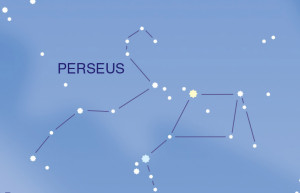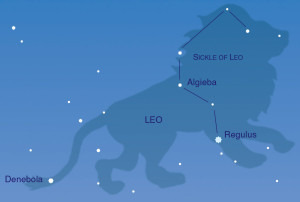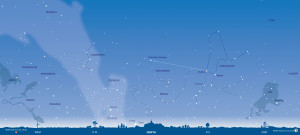Top tips for stargazing in March!
by Floris Books • 20 March 2015 • Uncategorized • 0 Comments
Did you tune in to watch Stargazing Live with Professor Brian Cox on BBC last night? We certainly did and now we’ve been inspired to delve back into our essential Stargazers Almanac 2015 to find more tips for stargazing and what to watch out for in the night sky this month.
Bob Mizon’s beautifully illustrated monthly guide to the stars and planets allows you to step outside and track the planets, locate the Milky Way, recognise the constellations of the zodiac and even watch meteor showers. We love Stargazers Almanac because of it’s easy to follow month-by-month guide to the night skies. It’s designed specifically for naked-eye astronomy – no telescope required! – making it ideal for beginners, children and backyard astronomers.
So if, like us, you’ve been inspired to brave the chilly March nights in search of constellations and bright stars, what should you look out for in the March sky?
Looking North
Although you might 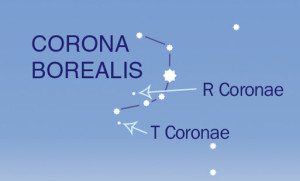 not spot any big constellations in the north, towards the north-east you might spot the tiny tiara of Corona. Don’t be deceived by it’s size; it contains two variable stars, one which has a habit of disappearing for weeks. The other is normally invisible but will often blaze out to become one of the brightest stars in the area.
not spot any big constellations in the north, towards the north-east you might spot the tiny tiara of Corona. Don’t be deceived by it’s size; it contains two variable stars, one which has a habit of disappearing for weeks. The other is normally invisible but will often blaze out to become one of the brightest stars in the area.
If you have your binoculars at the ready you can sweep across towards the north-west of the sky to spot the scattered star cluster, Perseus. It’s about 500 light years away!
Looking South
Towards the sou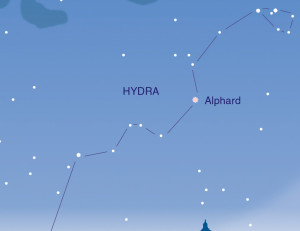 th in the late evening you might spy a long straggle of stars.
th in the late evening you might spy a long straggle of stars.
This is Hydra, the Water Snake, and it’s the longest constellation in the night sky. It represents the monstrous multi-headed creature slain by Hercules.
You’ll also be able to spot the Sickle of Leo, which looks like a reversed question mark. If you look carefully you might also spy the tail of Leo, the Denebola, a bright star 36 light years away!
Telescope at the ready? Jupiter is now well inside the borders of Cancer and telescope users might be lucky enough to see Jupiter’s four Gabilean moons all strung out to one side of the planet. 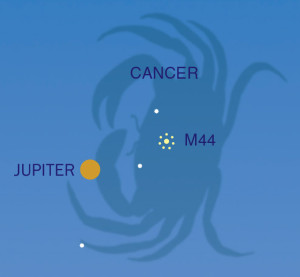
More top tips!
You need to let your eyes adjust to the dark – about 5 minutes is usually all it takes.
If you’re not familiar with constellations, first look for the brightest stars and use them as pointers to other objects.
If you don’t have a compass, fear not! You can still find North by locating the Pole Star, indicated by the two ‘pointer’ stars of the Plough, as shown on the January chart below.
If that’s got you in the mood to search the night’s sky you might also enjoy our new eBook, The Solar Eclipse of 2017 by Wolfgang Held. It’s a wonderful little guide to the 2017 American solar eclipse, including the best places and exact times to experience it.
Let us know if you have any stargazing tips of your own. You can tweet us @florisbooks to join us in the stargazing fun!
About our astronomy books
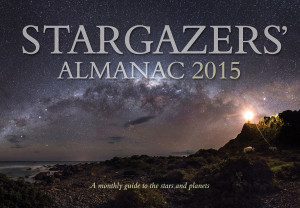 Stargazers Almanac 2015 is a beautiful month-by-month guide to the night skies. It’s designed specifically for naked-eye astronomy – no telescope required! – making it ideal for beginners, children and backyard astronomers.
Stargazers Almanac 2015 is a beautiful month-by-month guide to the night skies. It’s designed specifically for naked-eye astronomy – no telescope required! – making it ideal for beginners, children and backyard astronomers.
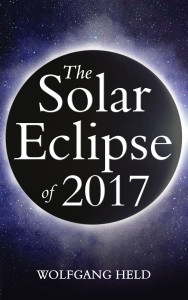 The Solar Eclipse of 2017 is a wonderful little guide to the 2017 eclipse, including the best places and exact times to see the eclipse (including detailed maps), as well as lots of tips on the best locations, safety equipment, and what to expect, minute by minute. This invaluable book will help you make the most of those few precious minutes.
The Solar Eclipse of 2017 is a wonderful little guide to the 2017 eclipse, including the best places and exact times to see the eclipse (including detailed maps), as well as lots of tips on the best locations, safety equipment, and what to expect, minute by minute. This invaluable book will help you make the most of those few precious minutes.
